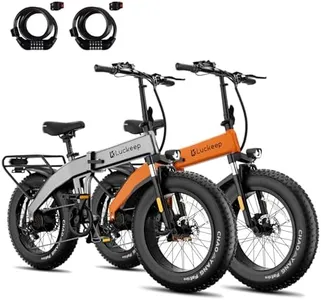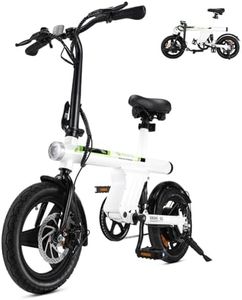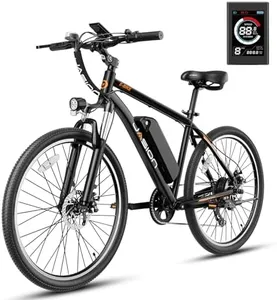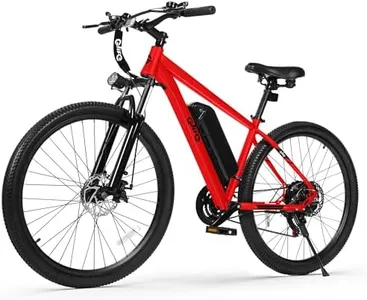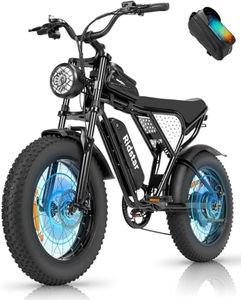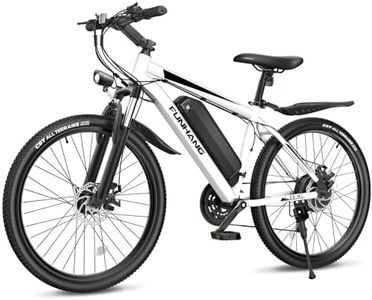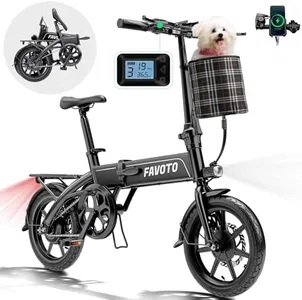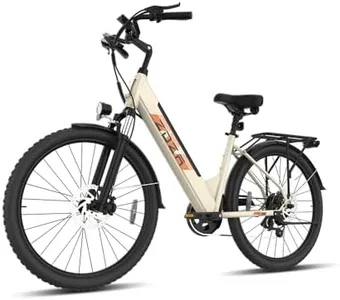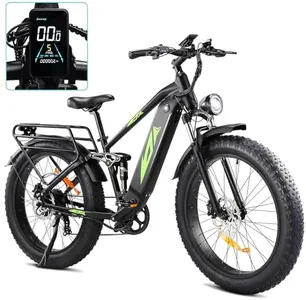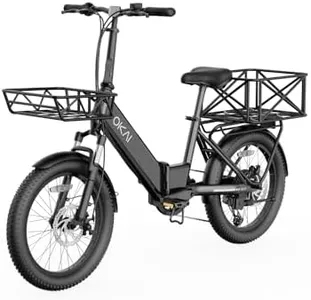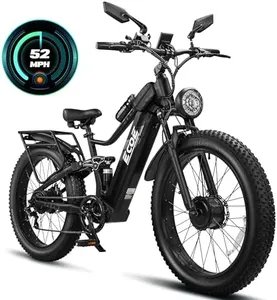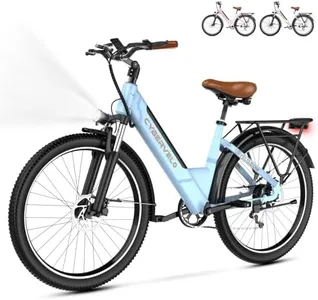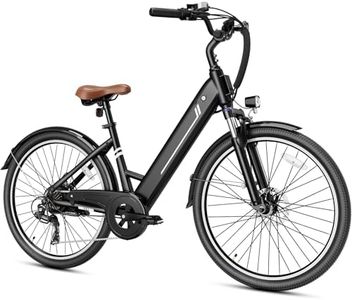Our technology thoroughly searches through the online shopping world, reviewing hundreds of sites. We then process and analyze this information, updating in real-time to bring you the latest top-rated products. This way, you always get the best and most current options available.

Our Top Picks
Winner
isinwheel U1 Electric Bike for Adults 750W Peak Motor, 20 mph Folding Ebike, 14" Adults Electric Bicycles with Smart Uphill, 280.8Wh Battery, 25 Miles PAS Range, Mini E Bikes for Adults and Teens
Most important from
347 reviews
The isinwheel U1 Electric Bike is a compact and portable e-bike designed for adults and teens, ideal for commuting and casual rides. Its 750W peak motor provides ample power for city rides and moderate inclines, reaching up to 20 mph. The 280.8Wh battery offers a 25-mile range on pedal assist mode, which should suffice for most short commutes and errands.
Portability is a strong suit, with foldable handlebars and pedals, along with a lightweight frame, making it easy to store or transport in a car trunk or navigate tight spaces like elevators. The bike's carbon steel frame and 14-inch wheels add durability, although the small wheel size may not handle rough terrains as well as larger wheels. The dual disc brakes ensure reliable stopping power in various weather conditions, enhancing safety.
However, the rear suspension might not fully absorb shocks on very bumpy roads, and the absence of front suspension might be felt on rougher rides. The smart uphill assist is a notable feature, providing tailored power for climbs up to 15°. The bike supports three riding modes: pure electric, pedal assist, and normal biking, offering versatile options for different needs. While the assembly is required, the bike comes with the necessary tools and components, such as dual lights and fenders, adding value. A one-year warranty and certification to stringent safety standards (UL2849 and CFR1512) provide additional peace of mind. Given these attributes, the isinwheel U1 suits urban commuters and those with limited storage space, though it might not be the best fit for rugged off-road adventures.
Most important from
347 reviews
Jasion EB5 Electric Bike for Adults with Peak 500W Brushless Motor, 40Miles 20MPH Commuting Electric Mountain Bike with 360Wh Removable Battery, 7-Speed, 26" Tires and Front Fork Suspension
Most important from
1844 reviews
The Jasion EB5 Electric Bike for Adults is a versatile option suitable for commuting and light off-road adventures. It boasts a peak 500W brushless motor that can reach speeds up to 20 MPH, making it sufficient for most city rides and moderate climbs. The 360Wh removable battery offers a reasonable range of 25-40 miles per charge, balancing daily commutes and short recreational rides, though it may require frequent charging for longer trips.
Its 26-inch tires and front fork suspension enhance ride comfort and stability, especially on uneven surfaces. The 7-speed gear system provides flexibility in various terrains, and the front and rear mechanical disc brakes ensure reliable stopping power for safety. The LCD display is user-friendly and provides essential ride data, contributing to an informed riding experience. Weighing 49.6 lbs, the bike is relatively lightweight for an electric model, though some users might find it slightly cumbersome to carry when not riding.
The high-carbon steel frame is durable and adds stability, but it does make the bike heavier compared to those with aluminum or carbon fiber frames. The bike's minimalist design and included components such as a horn, kickstand, and lights add convenience and practicality. However, the assembly required might be a minor hassle for some users. With a 12-month warranty, the Jasion EB5 is a solid choice for adults looking for a practical and comfortable e-bike for daily commuting or casual rides.
Most important from
1844 reviews
Qlife Racer Electric Bike for Adults - 21-Speed Mountain Lightweight Ebike with 750W Peak 22MPH Brushless Motor, 375Wh Removable Battery, 26X2.1 Step Over E-MTB,E Bikes,Red
Most important from
528 reviews
The Qlife Racer Electric Bike is designed for adults and combines a powerful 750W peak motor with a 21-speed gearset, making it suitable for various terrains. Its motor allows speeds up to 22 MPH, which is great for commuting or casual rides. The bike features a 375Wh removable battery that charges in about 4 hours and offers a range of up to 25 miles on throttle or 40 miles with pedal assist, providing ample distance for most daily needs.
The carbon steel frame ensures durability, while the bike's weight of 48.1 pounds strikes a balance between sturdiness and portability. However, it may feel a bit heavy for some users when carrying it upstairs or for storage. The front suspension and dual disc brakes offer enhanced comfort and safety, particularly on uneven surfaces and during sudden stops. The inclusion of a walking-assist mode is a thoughtful touch for easier maneuvering in tight spaces.
The LCD screen is user-friendly, displaying essential information like speed, battery level, and assist mode, which helps in managing your ride efficiently. Some potential drawbacks include the need for assembly, though it comes 90% pre-assembled with tools and instructions provided. Additionally, the bright red color may not appeal to everyone. While the bike offers solid performance, the 375Wh battery might require more frequent charging compared to higher-capacity options. The Qlife Racer Electric Bike is a versatile option for adult riders seeking a powerful and feature-rich e-bike for various uses, from daily commuting to recreational rides.
Most important from
528 reviews
Buying Guide for the Best E Bikes
Choosing the right e-bike can be a game-changer for your commuting, exercise, or leisure activities. E-bikes come with various features and specifications that can cater to different needs and preferences. Understanding these key specs will help you make an informed decision and find the best fit for you. Here are the main aspects to consider when selecting an e-bike:FAQ
Most Popular Categories Right Now
